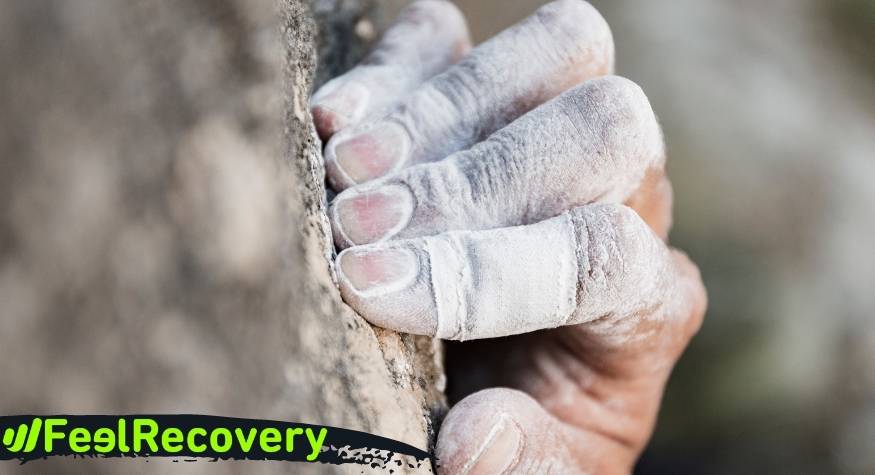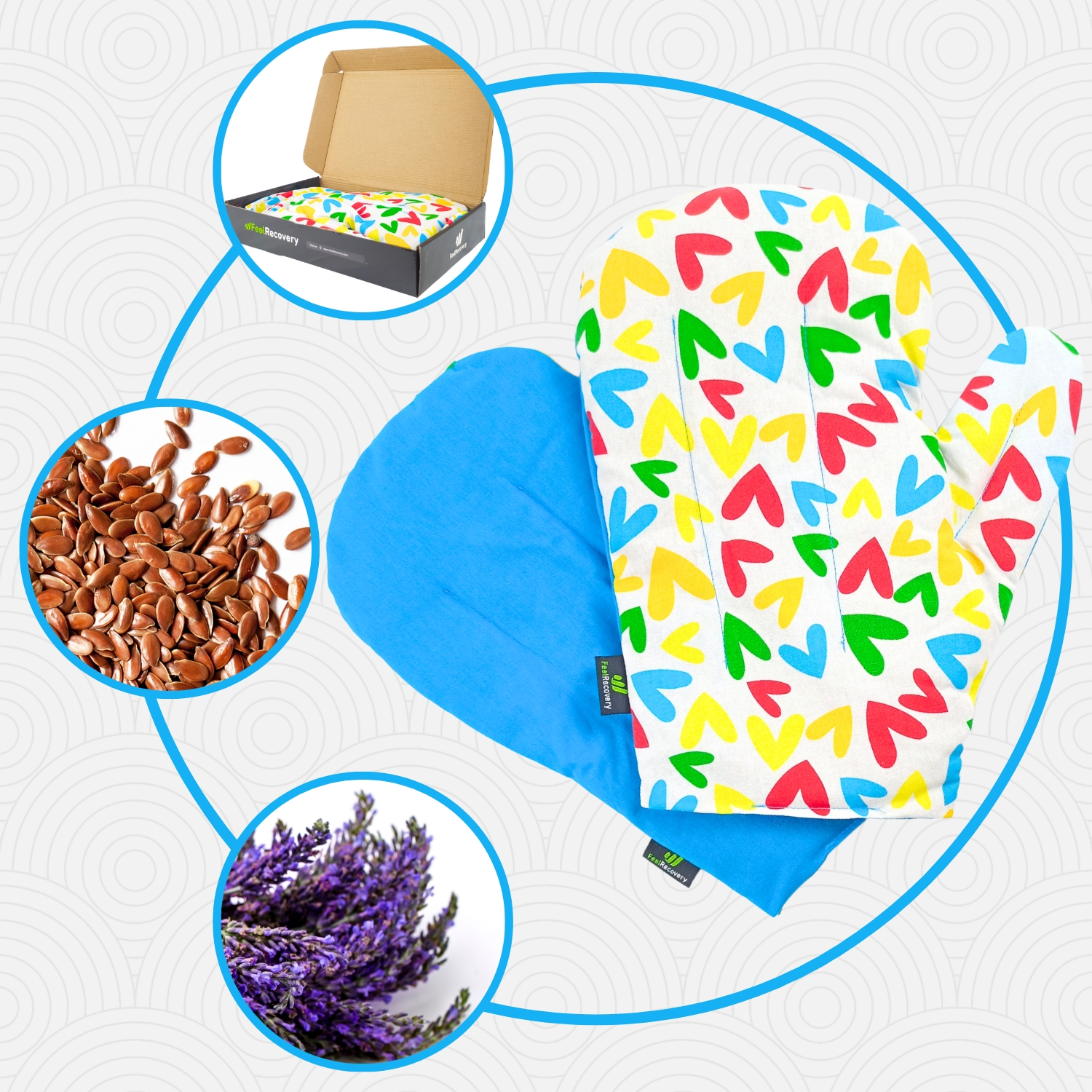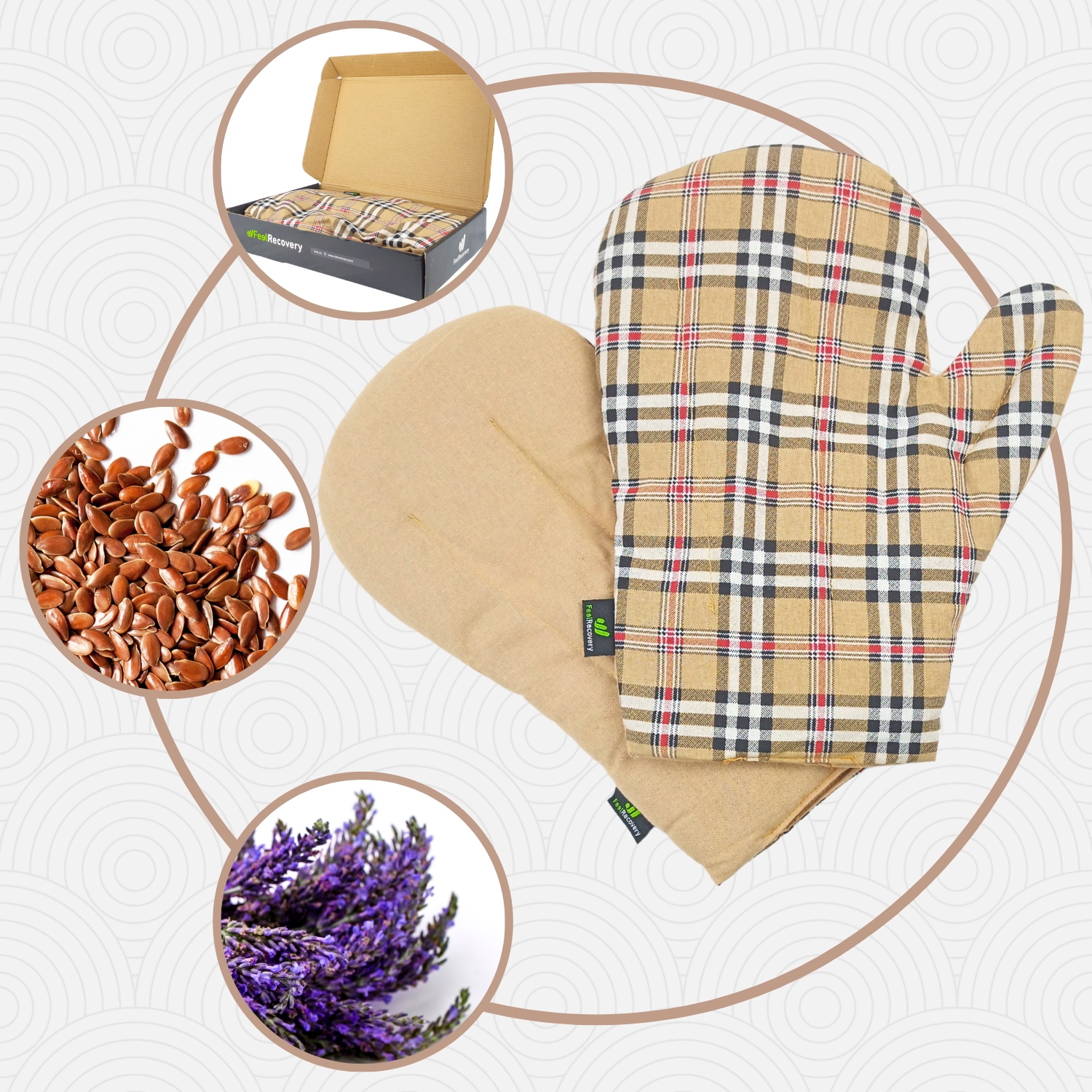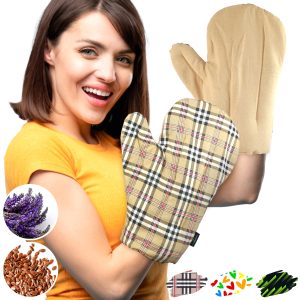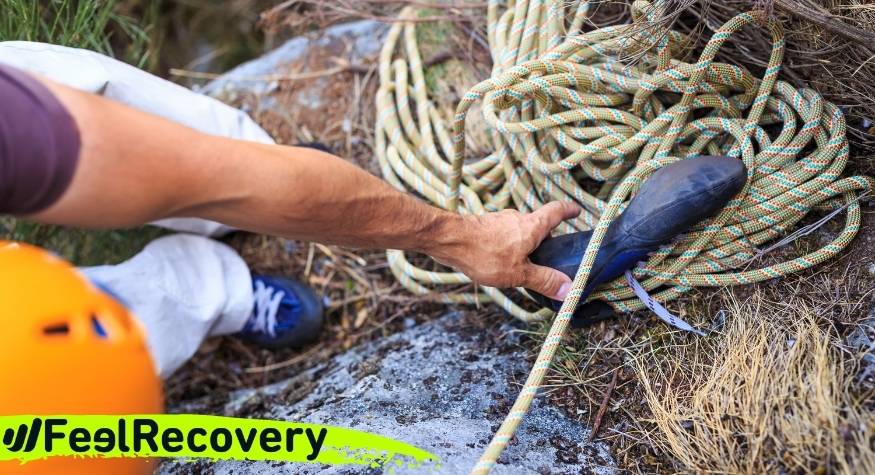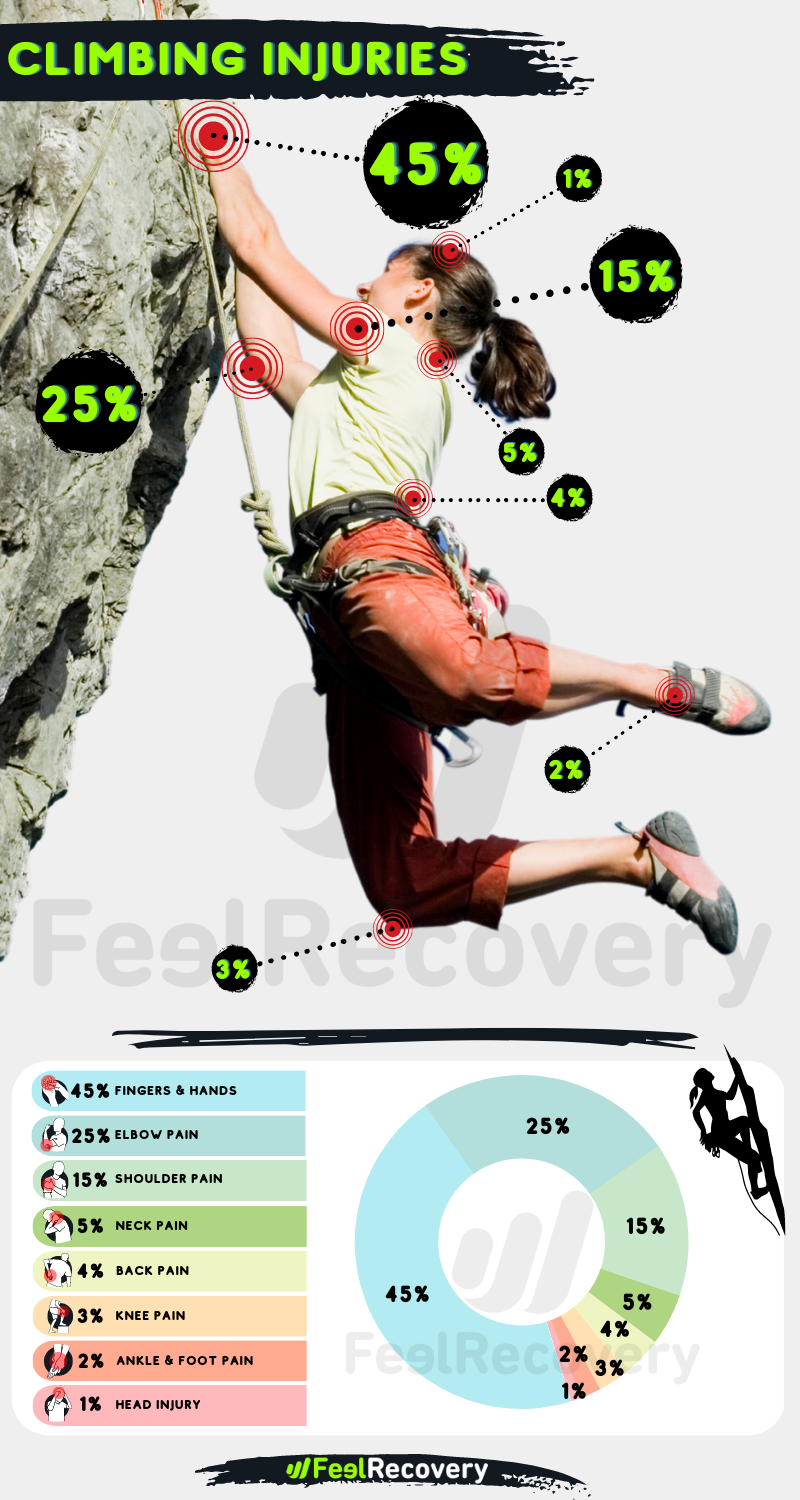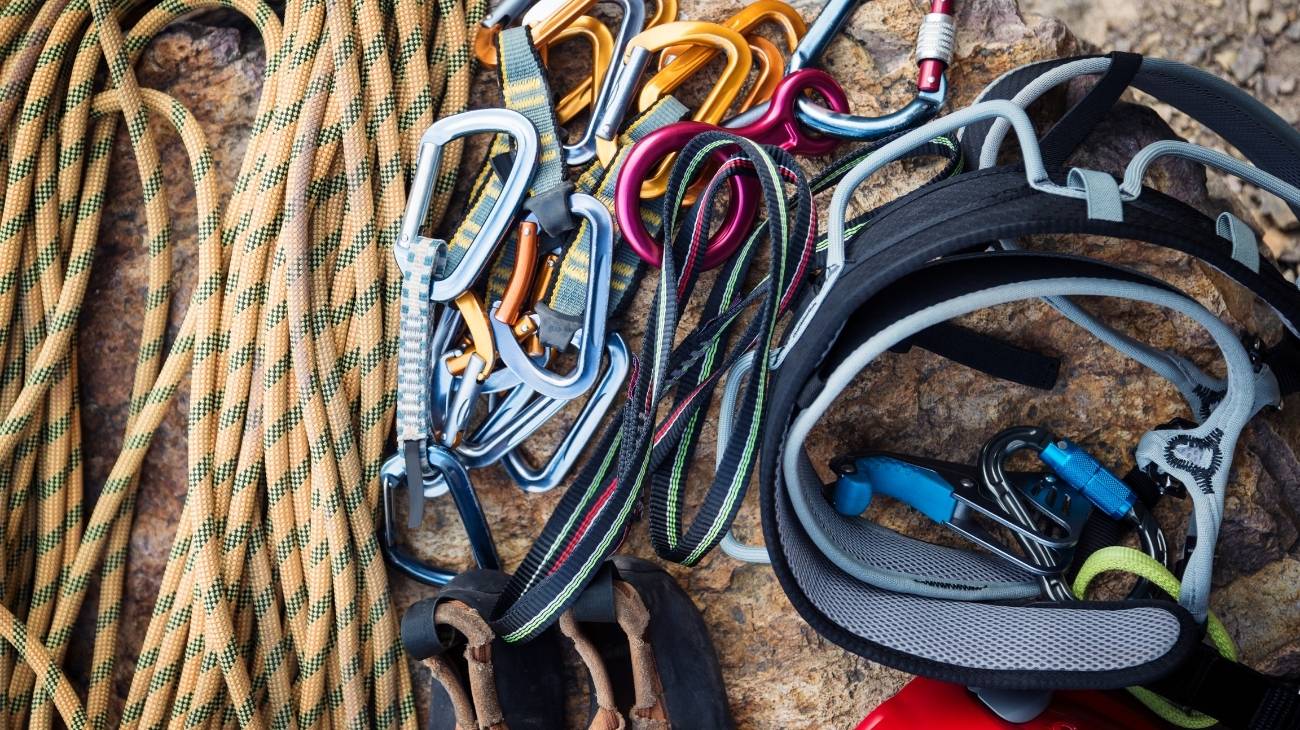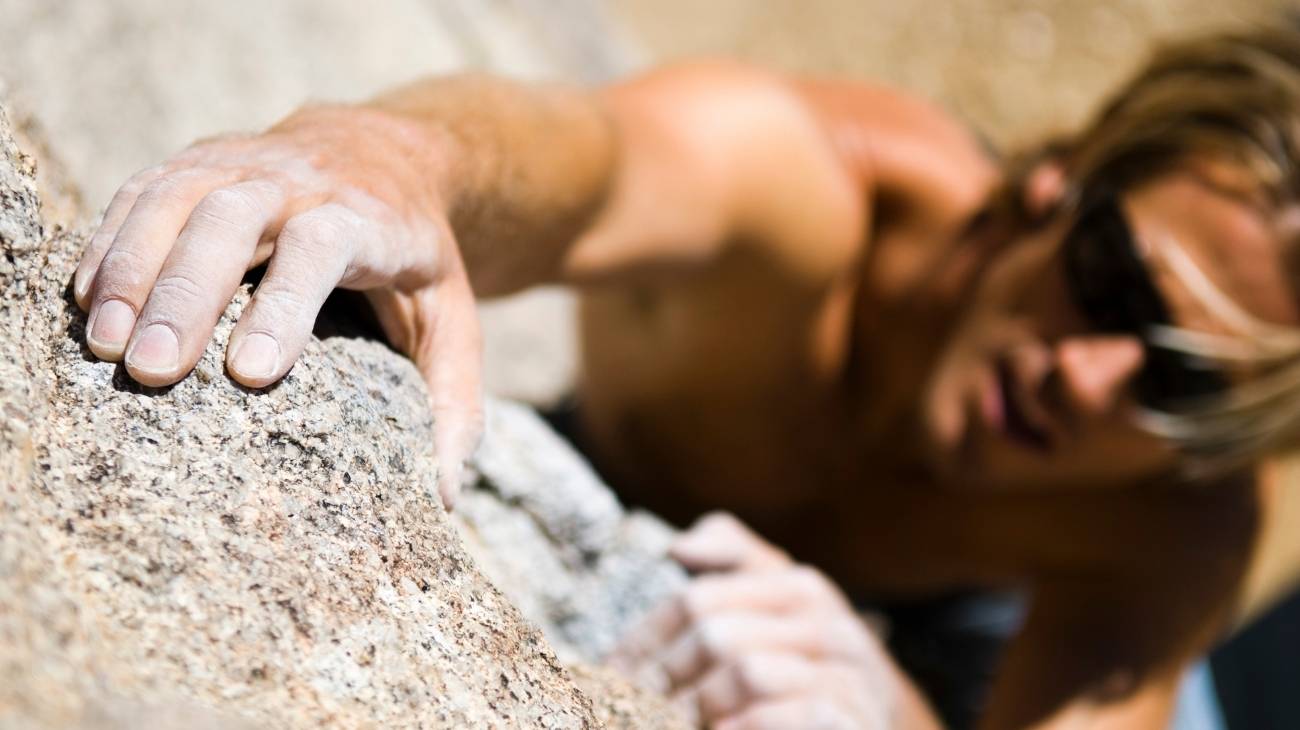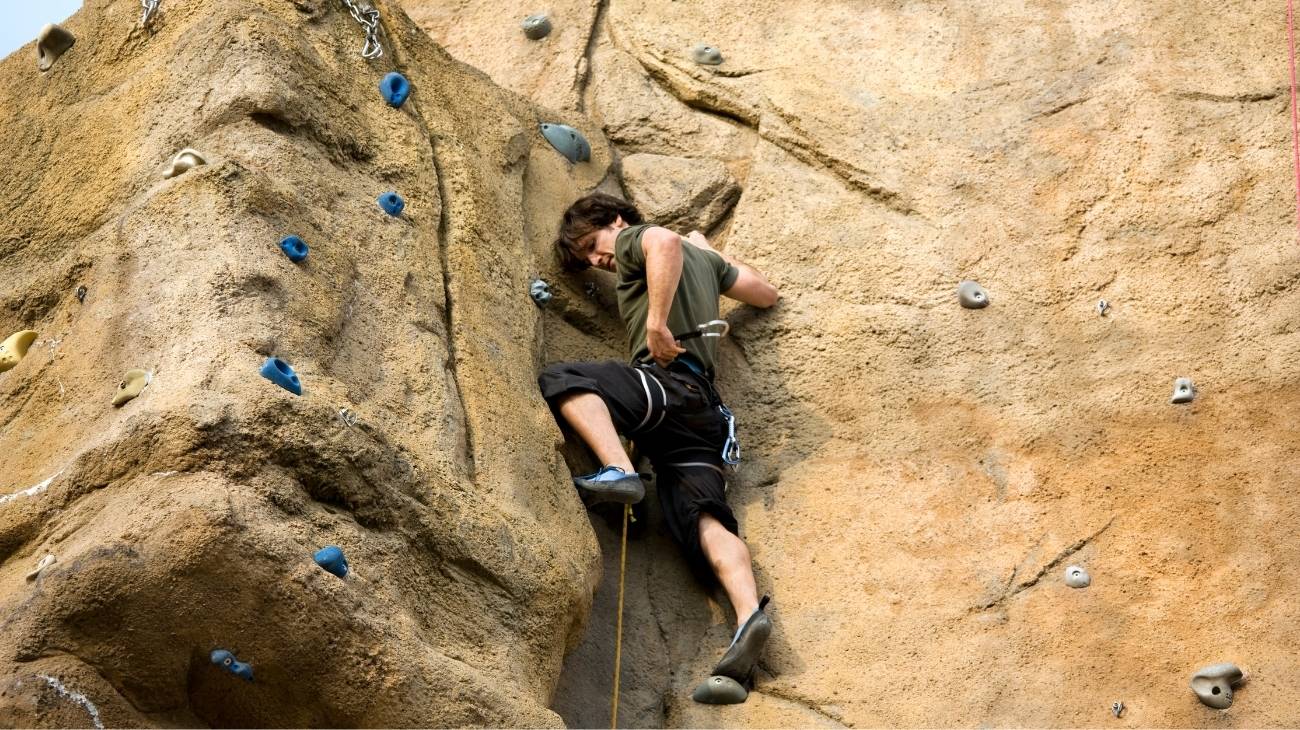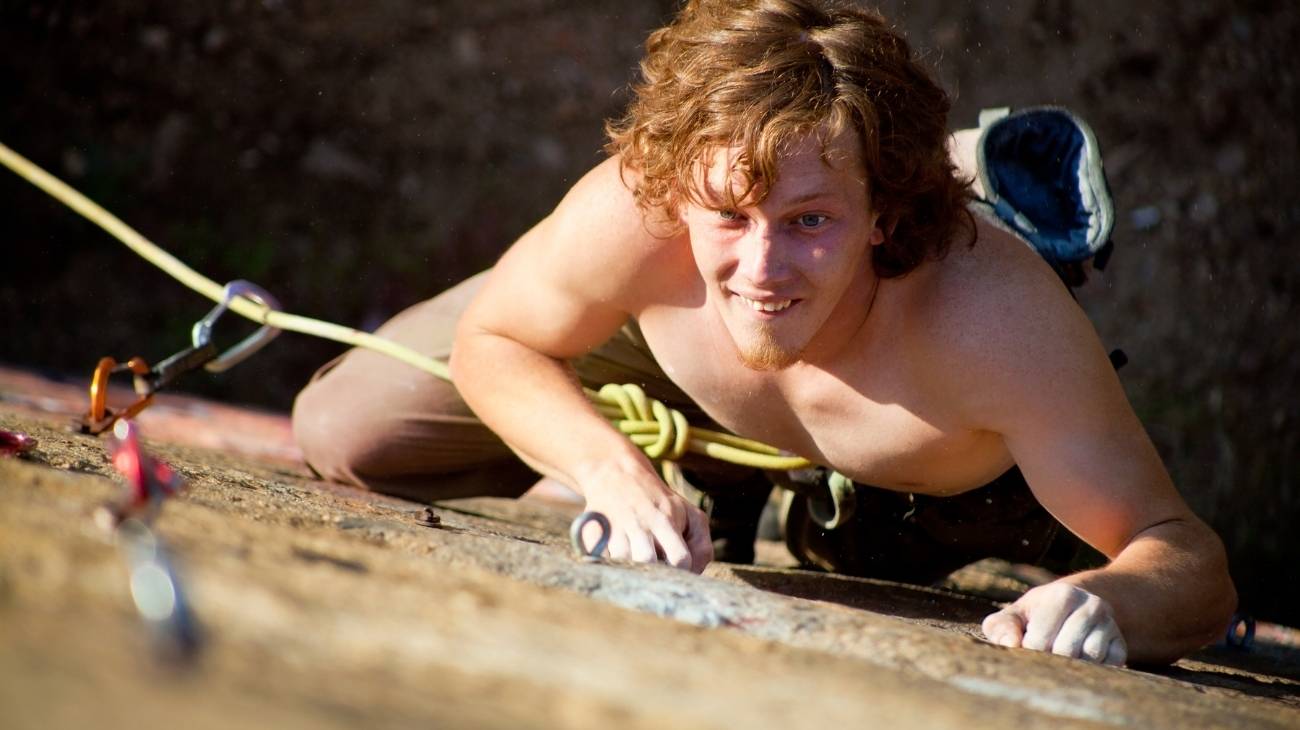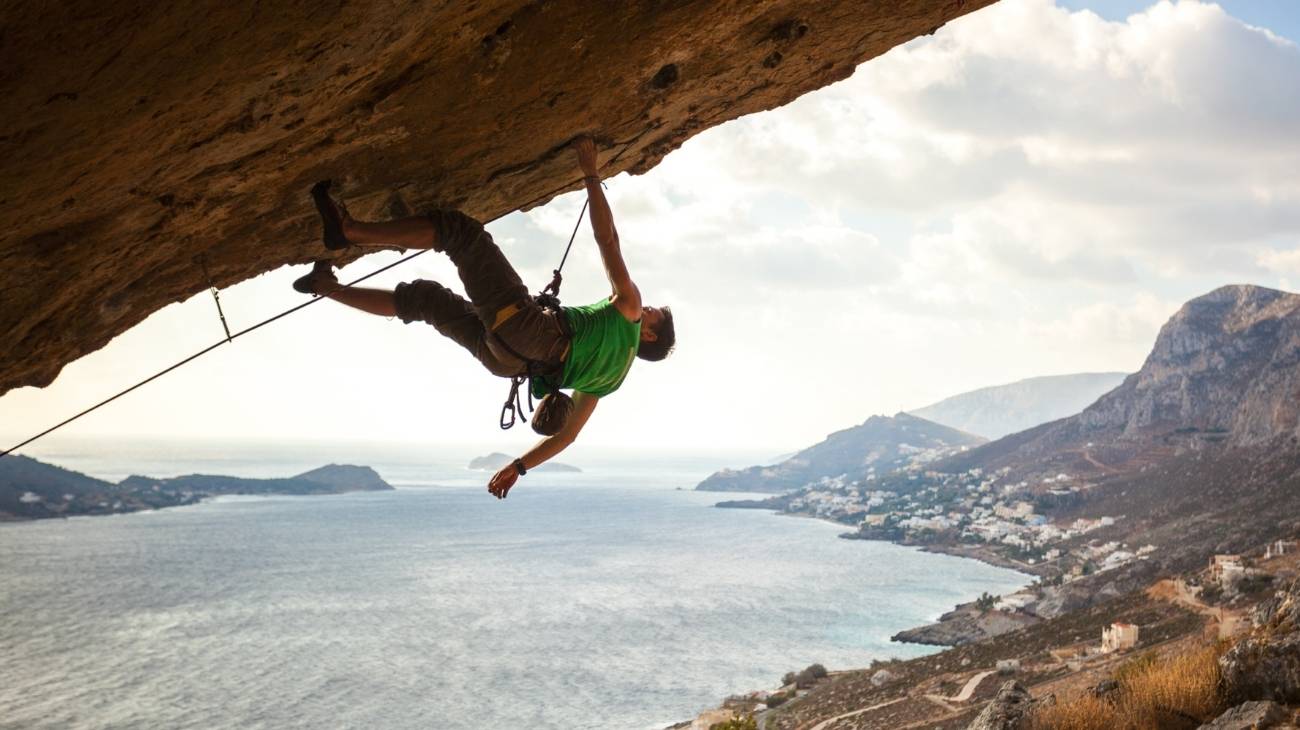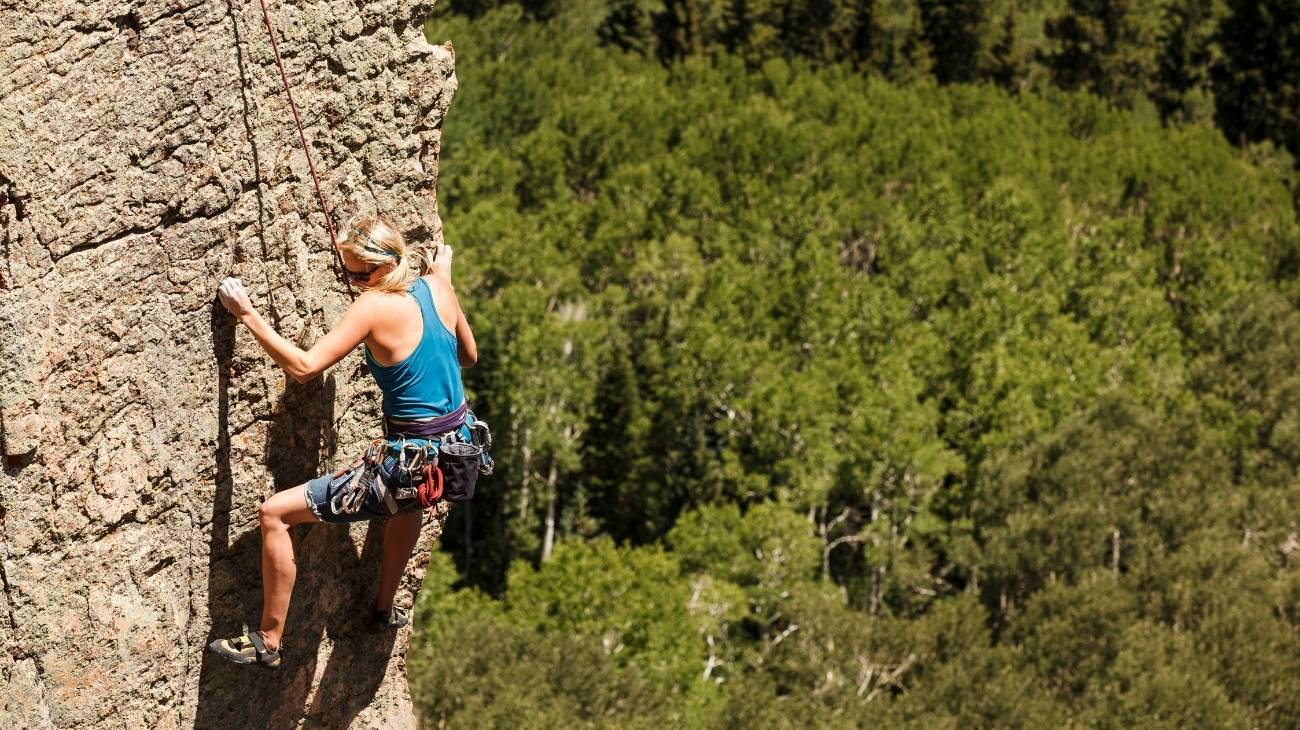Do you like climbing but don't want to get injured in the attempt? In this opportunity we bring you some methods of prevention of sports injuries in rock climbing. This, so that you can enjoy this discipline with the least risk.
Climbing can be traumatic or stressful and can lead to injuries. Fortunately, there are strategies and safety measures that can help keep you safe. Follow along with us and you'll learn how to prevent sports climbing injuries. Here's how!
What are the most common types of rock climbing injuries?
Climbers can suffer sports injuries to different parts of the body, both from overuse and trauma. The upper extremities are the focus of many of these conditions - after all, they are the focus of a lot of rock climbing stress. However, other areas such as the knees are also at significant risk of injury when climbing.
The most common sports injuries in rock climbing are:
- Shoulder injuries: It has been estimated that shoulder injuries account for 17% of all sport climbing injuries. Many of these are due to the repetitive use of the shoulder inherent in this discipline. SLAP injuries, certain rotator cuff and biceps conditions, shoulder dislocations and bursitis stand out.
- Hand, finger and wrist injuries: These are considered to be among the most affected areas in the sport. Common finger conditions include pulley injuries, collateral sprains, flexor tendon strains and dislocations. Of particular note are tears of the triangular fibrocartilage complex at the wrist, and tears of the lumbrical muscles in the palmar area. Fractures and tenosynovitis are also common.
- Knee injuries: Many of these injuries have been linked to movements such as lolot, heel strike and high step. They can be caused by trauma or overuse. Meniscus tears, sprains, patellar dislocation, fractures and bursitis are the main conditions in this joint.
Best products for climbing injury recovery
Bestseller
-
2 Elbow Compression Sleeve (Black/Gray)
£20,95 -
2 Elbow Compression Sleeve (Green/Navy)
£20,95 -
2 Elbow Compression Sleeve (Pink/Bordeaux)
£20,95 -
2 Knee Compression Sleeve (Black/Gray)
£20,95 -
2 Knee Compression Sleeve (Green/Navy)
£20,95 -
2 Knee Compression Sleeve (Pink/Bordeaux)
£20,95 -
2 Mittens: Microwave Arthritis Gloves (Hearts)
£24,95 -
2 Mittens: Microwave Arthritis Gloves (Oxford)
£24,95 -
Wheat Bag for Microwave Classic Bottle Shaped (Hearts)
£20,95 -
Wheat Bag for Microwave Classic Bottle Shaped (Oxford)
£20,95 -
Wheat Bag for Microwave Classic Bottle Shaped (Sport)
£20,95
-
2 Patella Knee Strap (Black/Gray)
£12,95 -
2 Patella Knee Strap (Green/Navy)
£12,95 -
2 Patella Knee Strap (Pink/Bordeaux)
£12,95 -
Foot Massage Roller for Plantar Fasciitis (Black)
£20,95 -
Foot Massage Roller for Plantar Fasciitis (Green)
£20,95 -
Foot Massage Roller for Plantar Fasciitis (Pink)
£20,95 -
Ice Massage Roller Ball (Black)
£34,95 -
Ice Massage Roller Ball (Green)
£34,95 -
Ice Massage Roller Ball (Pink)
£34,95 -
Shoulder Support Brace (Black)
£24,95 -
Shoulder Support Brace (Green)
£24,95 -
Shoulder Support Brace (Pink)
£24,95 -
Soft Density Foam Roller for Recovery (Black)
£34,95 -
Soft Density Foam Roller for Recovery (Green)
£34,95 -
Soft Density Foam Roller for Recovery (Pink)
£34,95
List of injury prevention methods for climbing and mountain sports
There are various methods of sports injury prevention for climbers. Of course, they do not completely eliminate the risk of injury, but they do significantly reduce it. Therefore, we recommend that you pay close attention so that you can enjoy this sport in nature without injury.
Warm-up
A good warm-up before climbing is essential to prepare the body for the sport and reduce the risk of injury. Warming up increases circulation, heart rate, temperature and flexibility. This helps the muscles and other tissues to withstand the stresses inherent in rock climbing more safely.
This warm-up can take around 30 minutes. During this period, aerobic exercise such as jumping rope should be performed first. Next, dynamic stretches such as arm circles are recommended. Finally, you should do some climbing, starting with a low level of difficulty and progressively raising it to just below your personal best.
Finish your workouts with a cool down
It is important to cool down well after finishing a climb. It will basically allow your heart rate, temperature, breathing and muscle tone to gradually return to their resting state. This will promote recovery, relaxation and muscle flexibility, which will help prevent injury in the long term. In particular, cooling down helps to eliminate waste substances that accumulate in the muscles.
The cool-down can last for a period of 10 to 20 minutes. First, a light aerobic exercise such as the warm-up should be performed at a low intensity. Afterwards, static stretching followed by massage (such as self-massage) and breathing is recommended.
Good nutrition and hydration
It is important that the climber is well nourished and hydrated in order to climb with energy and with less risk of injury. Therefore, a balanced diet containing appropriate amounts of nutrients (carbohydrates, proteins...) should be consumed. This diet will depend on the individual and his or her personal goals. Of course, the right amount of water and electrolytes should be ingested to avoid dehydration or overhydration.
Here are some aspects to take into account:
- Hydration: To address hydration correctly, various factors such as sweating, temperature, hours of training, among others, must be considered. However, body hydration can be measured according to the colour of the urine. If it tends to a dark yellow colour, it means that you need to drink more water. But if it has a light yellow colour there is no problem.
- Before practice: Fluids, carbohydrates and proteins are essential for nutrition and hydration before a climb. It is recommended to eat a meal 1 to 2 hours before climbing.
- During the climb: It is also important to eat foods rich in carbohydrates and moderate in protein during the climb. Therefore, it is important to carry some snacks in your backpack.
- After the climb: A balanced carbohydrate and protein meal should be eaten within 1 hour after rock climbing. Water and electrolyte replenishment is also essential at this point.
Improve your fitness
It is important to be in good physical and mental shape to meet the challenges of rock climbing while minimising the risk of injury. Climbers need to develop equal parts strength, endurance, power and flexibility. Their upper limbs must be strong and resilient, while their hips must be flexible. To achieve this, these athletes have to undergo an appropriate system of training and physical conditioning.
In terms of anthropometric measurements, according to research, elite climbers generally possess short stature, low body mass and body fat, and high grip strength in relation to their body weight. However, training is more important than anthropometric measurements in climbers' performance.
Sports massage
This is a type of massage aimed at: preparing the athlete for the sporting event and promoting tissue recovery after exertion or injury. It is indicated as a method of diagnosis, treatment and prevention of common injuries in climbing and other sporting disciplines.
In general, these massages help to reduce stiffness, delayed onset muscle soreness (DOMS), fatigue and inflammation. They also help to increase muscle flexibility, which is essential for rock climbing.
Use of heat and cold therapies
It is also known as contrast therapy because it involves applying cold and heat alternately. It is mainly applied through consecutive baths of hot and cold water (contrast baths) in which the whole body or only a part of it is immersed.
This therapy has ideal benefits for the treatment and prevention of injuries. It generates a pumping effect on the blood circulation through vasoconstriction and vasodilatation, caused by low and high temperatures respectively. This results in a reduction in pain, swelling and fatigue.
Use of compression garments
These clothing are made of elastic materials and are generally smaller than the area of the body they are worn on. This design allows them to generate pressure at the surface level. They come in all types: T-shirts, shorts, socks, sleeves, among others. They are attributed with different benefits that can help in the prevention of sports injuries in rock climbing. Among these benefits we can highlight the promotion of muscle recovery, increased performance and attenuation of muscle vibrations. As they are flexible, they allow a good range of mobility, which is necessary for climbing.
Use of acupressure therapies
Acupressure is a therapy derived from natural Chinese medicine. It involves the application of pressure to specific areas of the body using the hands, elbows and other means. Although similar to acupuncture, it differs from acupuncture mainly in that it does not involve the use of needles. It is known as an alternative way of treating certain diseases and conditions. Various benefits are attributed to it such as the relief of pain and muscle tension. These effects are ideal in the treatment and prevention of injuries.
Use of thermotherapy and cryotherapy
Thermotherapy has the ability to increase circulation and flexibility, as well as relieve pain and relax muscles. Cryotherapy, on the other hand, acts as an analgesic, anti-inflammatory and antispasmodic. All these benefits mean that both therapies are used in the treatment and prevention of sports injuries.
For example, it is possible to use thermotherapy to make tissues more flexible before rock climbing, which would reduce the risk of tearing. Cryotherapy can help muscle recovery after a climb and alleviate discomfort that could lead to injury afterwards.
Use of good equipment
In rock climbing, it is essential to use the right equipment of the highest quality, as the physical integrity and even the life of the climber depends on it. Therefore, it is necessary to choose the right rope, carabiners, belay devices, harness, helmet, and other elements.
Clothing should be comfortable and allow a wide range of mobility, but should not be too loose. Of course, weather conditions influence the choice of clothing to wear when climbing outdoors. It is also very important to wear special climbing shoes.
References
- Rooks, M. D. (1997). Rock climbing injuries. Sports Medicine, 23, 261-270. https://link.springer.com/article/10.2165/00007256-199723040-00005
- Cole, K. P., Uhl, R. L., & Rosenbaum, A. J. (2020). Comprehensive review of rock climbing injuries. JAAOS-Journal of the American Academy of Orthopaedic Surgeons, 28(12), e501-e509. https://journals.lww.com/jaaos/Abstract/2020/06150/Comprehensive_Review_of_Rock_Climbing_Injuries.5.aspx
- Jones, G., Asghar, A., & Llewellyn, D. J. (2008). The epidemiology of rock-climbing injuries. British journal of sports medicine, 42(9), 773-778. https://bjsm.bmj.com/content/42/9/773.short
- Backe, S., Ericson, L., Janson, S., & Timpka, T. (2009). Rock climbing injury rates and associated risk factors in a general climbing population. Scandinavian journal of medicine & science in sports, 19(6), 850-856. https://onlinelibrary.wiley.com/doi/abs/10.1111/j.1600-0838.2008.00851.x
- Haas, J. C., & Meyers, M. C. (1995). Rock climbing injuries. Sports Medicine, 20, 199-205. https://link.springer.com/article/10.2165/00007256-199520030-00006
- Maitland, M. (1992). Injuries associated with rock climbing. Journal of Orthopaedic & Sports Physical Therapy, 16(2), 68-73. https://www.jospt.org/doi/abs/10.2519/jospt.1992.16.2.68
- Neuhof, A., Hennig, F. F., Schöffl, I., & Schöffl, V. (2011). Injury risk evaluation in sport climbing. International journal of sports medicine, 32(10), 794-800. https://www.thieme-connect.com/products/ejournals/abstract/10.1055/s-0031-1279723
- Woollings, K. Y., McKay, C. D., & Emery, C. A. (2015). Risk factors for injury in sport climbing and bouldering: a systematic review of the literature. British journal of sports medicine, 49(17), 1094-1099. https://bjsm.bmj.com/content/49/17/1094.short
- Addiss, D. G., & Baker, S. P. (1989). Mountaineering and rock-climbing injuries in US national parks. Annals of emergency medicine, 18(9), 975-979. https://www.sciencedirect.com/science/article/abs/pii/S0196064489804639
- Schöffl, V., & Winkelmann, H. P. (1999). Accident statistics at" indoor climbing walls". Sportverletzung Sportschaden: Organ der Gesellschaft fur Orthopadisch-traumatologische Sportmedizin, 13(1), 14-16. https://europepmc.org/article/med/10407959

